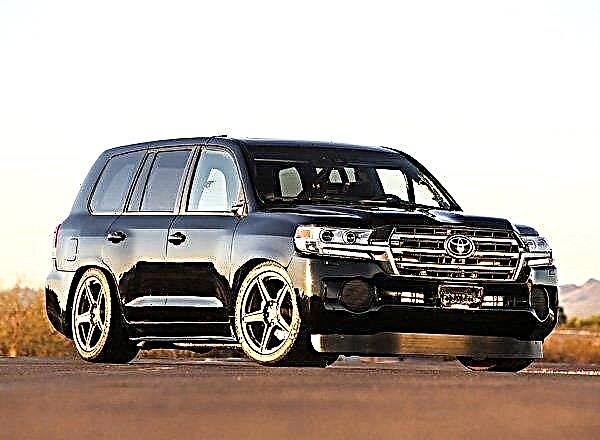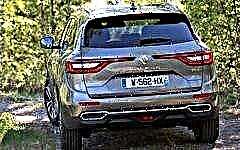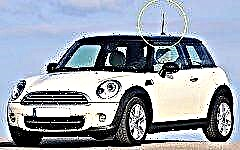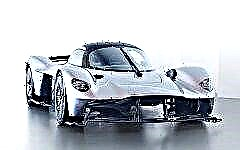

The content of the article:
- Automotive industry in Norway
- Swedish car industry
- Finnish car industry
Of the entire Scandinavian car industry, the most famous and popular among the people are Swedish cars - Volvo, Scania, Saab. Meanwhile, Norway and Finland also have something to surprise motorists with, and not assembly, but exclusively unique, their own production.
Automotive industry in Norway
At this time in Norway, the situation with the automotive industry is quite deplorable. Almost all companies, even nominally, exist, in fact, are frozen and are waiting for either their investors or gradual destruction.
Think Global

The years of active work of this company fell on 1991–2011, when compact electric vehicles rolled off the assembly line.
Now this Oslo brand is going through its fourth crisis in its history, although the last years of its existence have been more than productive.
About $ 40 million was invested by the company's management to promote its electric vehicles in Europe and the USA. But that was the period when the competitors - Nissan. Chevrolet, Mitsubishi - engaged in the development of alternative transport.
The Norwegian automaker rapidly began to lose income, and then completely stopped production at both the local plant and the Indiana subsidiary in America.
In 2012, Russian entrepreneur Boris Zingarevich bought out the forgotten electric car plant in order to revive it to a new life. Since then, however, there has been no more information about the Think brand.
Moxy

In the photo: Moxy quarry equipment
This major manufacturer of quarry equipment and dump trucks began life in 1969, and although it was acquired by the South Korean company Doosan in the late 2000s, it still exists today.
The only Norwegian manufacturer of heavy-duty vehicles specializes in the development of 4-wheel drive articulated dump trucks for challenging climatic conditions.
This small but reputable company has 6 thousand dump trucks alone, produced in three decades. Regular modernization of models allows customers to purchase modern, comfortable and technological equipment.
The "highlight" of the design is a single continuous axle of the rear bogie, which transmits torque to each pair of side wheels by means of onboard gear reducers.
Norsk

This manufacturer is listed as the very first in Norway. He conducted his activity in 1908-1911, during which he managed to produce only a dozen cars. The lineup consisted of two cars: an 8-horsepower subcompact and a 4-cylinder model with a "touring" body.
Troll

Norwegians tried to produce their own sports cars under the Troll brand, which existed in 1956-1958. The models had a plastic body and were released in only 15 copies.
Bjering

In the photo: museum exhibit car Bjering
The second indigenous local manufacturer, whose activity fell on the distant 1918-1920, during which Bjering produced 6 cars on the same base, but with different bodies.
These models were extremely narrow - one meter wide, so passengers had to sit one behind the other, with the driver behind his passenger.
In the "heart" of the car was a 20-horsepower 4-cylinder engine, and the wheels were additionally equipped with ... skis. The manufacturer assumed that drivers would be able to comfortably navigate in winter along narrow snow tracks.
Swedish car industry
In the pre-war period, the country actually did not have its own auto industry - only primitive rail chariots or copies of Buicks and Fords, produced under license, were offered.
But over the next 50 years, production began to develop rapidly, presenting the world with everyone's favorite automotive brands.
Volvo

Pictured: Volvo R 1800
One of the earliest models of this brand, the XC90, is still assembled in China. It was this model in the 90s that allowed the Norwegian company, founded in 1927, not only to stay afloat, but even to enter the world market.
With the second generation Volvo XC90, the real Volvo revolution begins, cementing it in the premium league of automakers.
Volvo is thanked for the most beautiful Swedish car, which is considered the P1800 model. Moreover, it attracts not only by its appearance, but also by its functionality, because it is one of the first developments in the "Gran Turismo" class. Finally, a world mileage record was set on this car - more than 4.8 million kilometers on its own engine.
Koenigsegg

In the photo: hypercar Koenigsegg CCX
There are no legendary victories or legendary models in the history of this brand, and the history of the company began only in 1994. And the production was created for the sake of one particular hypercar, the dream of which was visited by Christian von Koenigsegg. He literally infected people with his idea and made them invest in a machine that he thought out to every screw.
Although each car is created for a year, the creator is proud that each of its elements is the company's own development, and the car itself is assembled by hand.
The first really significant statement about itself was the supercar CCR, which showed a result of 388 km / h in 2005 on the speed track Nardo in 2005, and this is with a 4.6-liter engine from Ford Modular with 817 "horses".
In 2015, the Regera made a splash at the auto show with a hybrid powertrain with three electric motors and a custom transmission - one forward speed and one reverse.
While neither the exterior nor the 1,500-horsepower engine is outstanding, the hybrid setup used has shown that the possibilities are endless.
Scania

Pictured: one of the first Scania trucks
The owners of the railroad car factory, founded in 1891, hardly thought that one day it would grow into the production of the most advanced trucks in the world.
The Scania-Vabis 3244 model of 1928 became a curiosity unprecedented by the standards of that time, having a speedometer and ammeter, oil temperature gauge and clock, rear-view mirrors and a 6.4-liter overhead valve engine.
Saab

In the photo: Model Saab 99 Turbo
The world learned about this manufacturer in 1937, when it produced military aircraft, one of the fastest in its class. In the post-war years, all companies were engaged in repurposing, and Saab was no exception, delving into the design of the car.
The automotive history of the brand began with a model 92 of 1949, painted in khaki as part of the economy. Without departing from the aviation theme, engineers and designers presented the car with an amazingly aerodynamic body, which greatly facilitated the operation of the engine.
The company also contributed to the work on turbocharged engines. Although the debate over who was the pioneer continues to this day between BMW, Porsche and even Oldsmobile, it was Saab who brought it to the masses with the 99 Turbo.
Even the eminent Popular Mechanics magazine called this light car, which effortlessly overtook rivals on the track, the second best in the world after Porsche.
Finnish car industry
A rare person has heard anything about the Finnish automotive industry, but it exists, albeit not on a global level.
Sisu

In the photo: Sisu truck
This is the largest Finnish production, founded in 1931 and still existing, and in an independent capacity, without becoming part of any other auto giant.
Its title is translated as "Willpower" and was chosen by the Finnish people through an open vote.
The plant produces a wide range of trucks, as well as military equipment for the local army. The most extensive series of SH trucks was equipped with domestic, American and Swedish power units until the end of the 50s, when a small crisis overtook the company. After that, the production of their engines had to be stopped and switched to diesel engines from Rolls-Royce.
It is surprising that with the popularity of this brand's technology, the company barely made ends meet until part of its shares was acquired by the state.
RaceAbout

In the photo: the only Finnish electric car - Electric Raceabout
The company, founded by a group of enthusiasts from Helsinki, surprised the whole world in 2010. While other automakers were just getting down to developing electric cars, the guys from the University of Applied Sciences came up with, designed and already started testing the Electric Raceabout electric supercar.
Although from a design point of view, the project borrowed a lot from Ferrari, from a technical point of view, the development turned out to be very promising. As part of the experiment, she made her way to Switzerland, and on the Nürburgring race track in Germany she showed an amazing time - 9.36 minutes.
Subsequently, the electric car took part in various competitions more than once, setting even several records in its class. The creators themselves stated that this is only a test copy, and the company will continue its research in the design of electric cars.
However, there is currently no information on other products of these Finnish inventors.
Solifer

In the period from 1958 to 1984, this company was included in the list of the largest European manufacturers of mopeds. At the same time, the engineers decided to try their hand at manufacturing caravan trailers, and in 1965 a new round of development of the company began.
Solifer Camping, Goldie, Jupiter models gained immense popularity among travelers who needed a comfortable trailer at an affordable price.
In 2014, it became known about the closure of production - thus, the history of the Finnish caravanning ended.
Conclusion
The countries of Scandinavia really cannot be called automobile powers. Now they mainly depend on imported cars or drive the creations of their neighbor - Sweden.
In Finland, the eye takes a break from the traffic-filled streets - locals are more willing to move on bicycles.
But these countries should be noted already for trying to create their own industries, and some of the resulting copies are really worthy of memory in the automotive annals.











